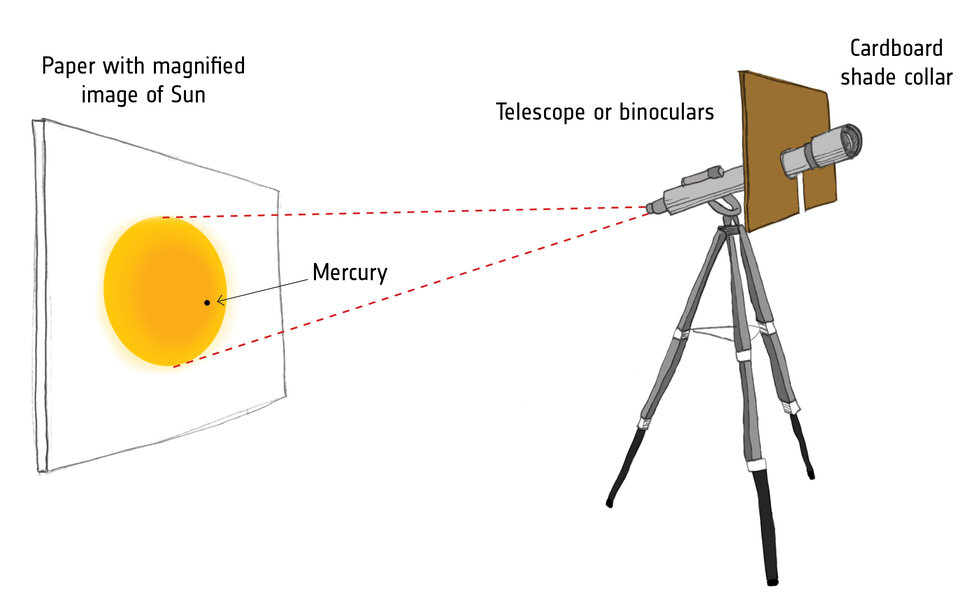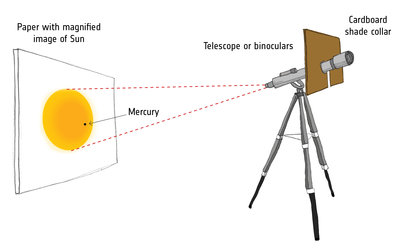Observing tips
When you do observe the transit ensure that safe viewing is your first priority.
The Sun must never be viewed directly, and you must never look through the eyepiece of a telescope to view the Sun.
The safest way to view the transit of Mercury is to project the Sun onto a shaded white surface using a telescope or a pair of binoculars. More information here.

To make measurements, the Sun could be projected onto a white piece of paper and students can work as a team to make measurements. One person can draw around the projected images of the Sun and Mercury. One person can adjust the telescope so that the Sun is always in view. You will find that the Sun will appear to move fairly quickly. Another person can record the times that the edge of the disc of Mercury appears to make contact with the edge of the disc of the Sun at the beginning and end of the transit.
If your school does not have access to the necessary equipment you could find if there are events taking place in your local area or get in touch with your local amateur astronomy group. Special low-cost projection kits are also available to buy.
Alternatively, you can follow real-time images of the transit from the solar observatory at the European Space Astronomy Centre (ESAC) near Madrid, Spain. A team of ESA scientists will be observing the transit from ESAC and from Antofagasta, Chile. Of course, live observations are always dependent on the weather, so it is not guaranteed that these events will yield measurements.
Real time images of the transit will be available from the ESAC solar observatory webpage.
The live broadcast of the transit will be accompanied by a dedicated Google hangout, during which experts will guide viewers through the transit and answer questions. The programme for the Hangout is available here.






